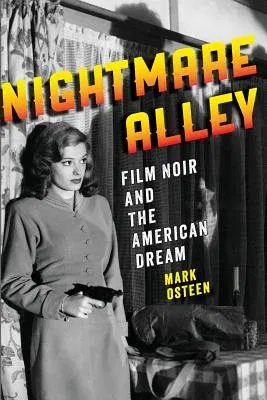Classic film noir offers more than pesky private eyes and beautiful
bad girls--it explores the quest for the not-so-attainable American
dream.
Winner of the CHOICE Outstanding Academic Title of the Choice ACRL
Desperate young lovers on the lam (They Live by Night), a cynical con
man making a fortune as a mentalist (Nightmare Alley), a penniless
pregnant girl mistaken for a wealthy heiress (No Man of Her Own), a
wounded veteran who has forgotten his own name (Somewhere in the
Night)--this gallery of film noir characters challenges the stereotypes
of the wise-cracking detective and the alluring femme fatale. Despite
their differences, they all have something in common: a belief in
self-reinvention. Nightmare Alley is a thorough examination of how
film noir disputes this notion at the heart of the American Dream.
Central to many of these films, Mark Osteen argues, is the story of an
individual trying, by dint of hard work or, more often, illicit
enterprises, to overcome his or her origins and achieve material
success. In the wake of World War II, the noir genre tested the dream of
upward mobility and the ideas of individualism, liberty, equality, and
free enterprise that accompany it.
Employing an impressive array of theoretical perspectives (including
psychoanalysis, art history, feminism, and music theory) and combining
close reading with original primary source research, Nightmare Alley
proves both the diversity of classic noir and its potency. This
provocative and wide-ranging study revises and refreshes our
understanding of noir's characters, themes, and cultural significance.

